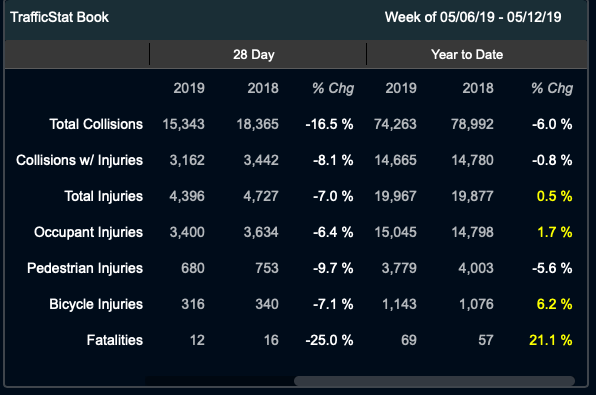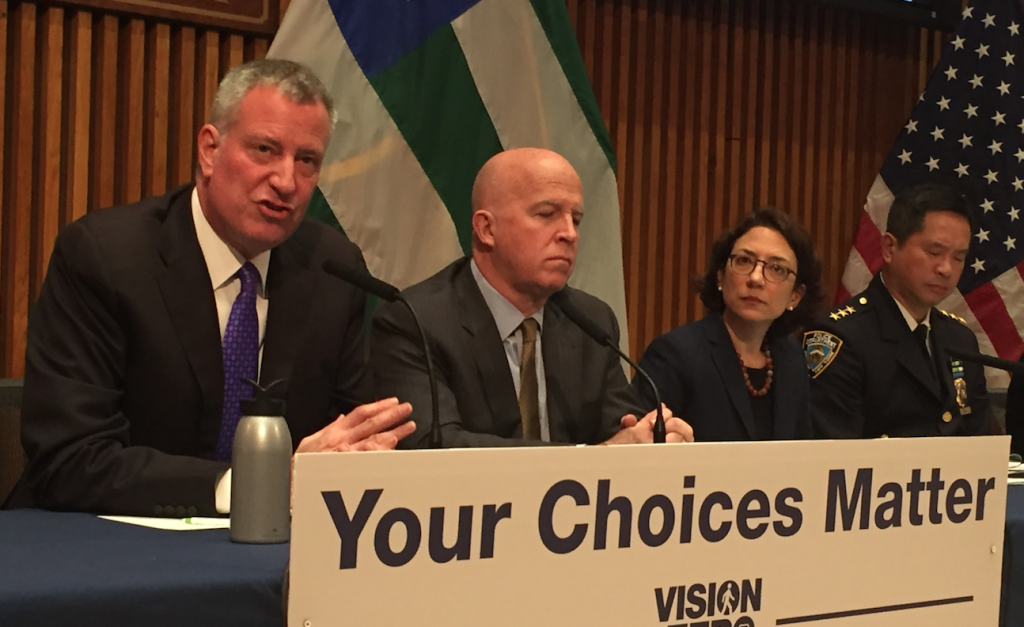Police Commissioner James O’Neill doesn’t want more money to investigate road collisions.
The city council wants to increase the budget for the NYPD's understaffed Collision Investigation Squad so that the 26-member team could respond to more than just 5 percent of the 2,000-3,000 fatal and near-fatal crashes every year — but the city’s top cop told reporters on Wednesday that he doesn't currently want the additional $2 million for 15 more detectives.
“This is something we look at on an ongoing basis as the number of crashes increase, and if we need to increase people in CIS that’s what we will do,” O’Neill said, not directly answering Streetsblog's question of why he won't take the extra cash to beef up the important squad.
But the number of fatal crashes has already gone up. This year, at least 66 people have been killed by a car driver — an increase of 20 percent in the same period last year, according to police statistics.

Currently, CIS fully investigates about 150 collisions every year, according to a council report — a small fraction of the crashes where someone dies or is likely to die. And the drivers are held accountable in an ever tinier percentage of those cases — in 2018, there were a total of 5,699 crashes involving death or serious injuries where the driver left the scene, according to city data. Of those, there were just 492 arrests — less than nine percent.
The squad doesn't currently have the manpower to respond to hundreds of less-serious, but still informative, crashes that happen daily. A pilot program in Manhattan North Patrol Borough has expanded the NYPD's Evidence Collection Team to include responding to collisions that CIS can't get to — and the city council also wants NYPD to expand that pilot to every precinct in the five boroughs. But O'Neill wasn't interested in that either.
He and his Chief of Transportation Thomas Chan said CIS is sufficient as is. Chan said during Tuesday's budget hearing that New York’s Finest are busy focusing on one of the department's biggest campaigns this year to help drive down the number of crashes and fatalities — left turns — along with other programs like “education, enforcement, and engineering."
“We are continuing to work on these issues, one of our main strategies this year is about left turns. I think that through our programs and our strategies that we’ve implemented over the years, we continue to change the culture of our drivers,” Chan said.
NYPD posted a video about the dangers of making left turns and how to make them safely on its YouTube page on April 11 — to date, it's received only 650 views, and many of those viewers were at Streetsblog. By comparison, on the same day, a YouTube user named Kris Keys posted a promotional video for her online course on how to paint tulips. It has received 651 views.
Inarguably, CIS is far more important than oil painting. The squad doesn't merely help hold bad drivers accountable — it can also help prevent future crashes by determining dangerous areas that the Department of Transportation should then address for safety improvements.
Rejecting council’s extra cash is simply essential, said Marco Conner, the co-deputy director of Transportation Alternatives, who called O'Neill's dismissal of the funds, "outrageous."
“It’s long been recognized a need for expanding CIS," Conner said. "When someone is seriously injured or killed, the victim cannot often speak for themselves. You just end up with the driver saying the victim jumped out between cars. A CIS investigation can delve further into it — they can come in and really shed some light on it. We all benefit when we have more data. It’s harder to establish facts, harder to bring charges if appropriate, harder to really hold the driver accountable.”






